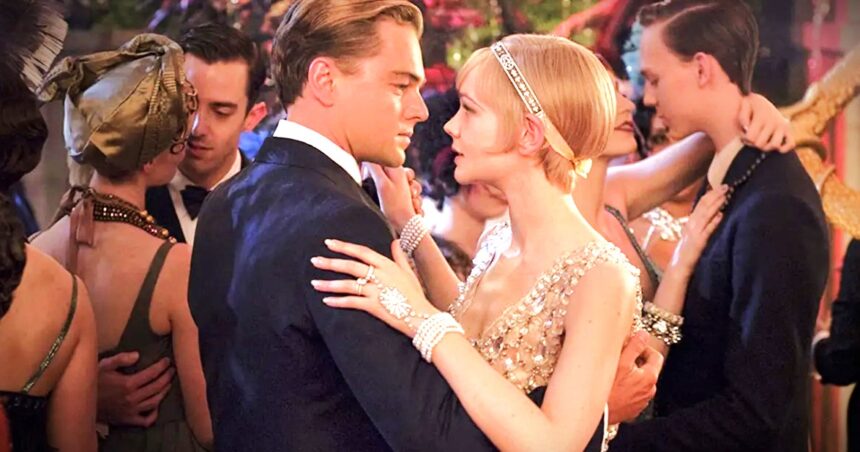If you think of 1920s mens fashion, images of gangsters wearing three-piece pinstripe suits and flapper girls dancing the Charleston may come to mind; however, this era also saw many practical yet refined styles that existed simultaneously.
Pocket watches and lapel pins brought an air of sophistication to any look, while functional headwear like fedoras or flat caps completed it all.
Introduction
After World War I, the United States experienced an explosion in both industry and wealth that enabled people to spend more money on clothes, entertainment, and household goods. Furthermore, traditional styles were lessened as people experimented with different fashions; this era became known as The Roaring 20s where new fashion styles emerged for both men and women alike.
People began wearing lighter fabrics like linen and cotton during this era, while wearing looser suits and pants than previously. Men’s shirts became more colorful with varied patterns; people also added pocket squares and cufflinks to personalize their outfits.
Men’s hat styles also evolved during this time. While fedora and derby hats were still commonly worn, top hats became an increasingly common fashion statement. Most top hats were usually constructed out of durable buckram material covered with fur or satin for added warmth and protection from rain or snow.
The roaring twenties were an exciting period of change and opportunity, which is evident by their iconic fashions of that period. From channeling Jay Gatsby to channeling your inner Downton Abbey, 1920s mens fashion men’s fashion will help ensure you look incredible.
When Did Mens Fashion Become Popular?
The Roaring 20s saw an upsurge in men’s interest for casual and sporty clothing that combined comfort with fashion-forward looks. Knitted pullover sweaters and cardigans layered over collared shirts offered more relaxed fits than traditional suits; while shirt patterns allowed men to express themselves freely through stripes, checks, floral designs or widening towards the hemlines; high-waisted trousers widening towards their hemlines, as well as tweed sports jackets were an integral part of dressing between formal attire and casual wear.
Waistcoats and vests were no longer mandatory like in the 1910s, yet still played an integral part in men’s fashion. They typically featured slim fitting designs with high button-up front closure and either notched lapels (later ditched for no lapels altogether) or no lapels at all; furthermore they featured longer pointed tips with deeper front openings to show off tie and shirt underneath.
Shoes were becoming more comfortable. Sneakers became popular as multi-purpose athletic wear and many men preferred them over dress shoe styles that had been prevalent prior to 1920. Additionally, men could select between fedoras and bowler hats when choosing a headgear style for active wear.
In the 1920s, fabrics changed as more synthetic materials began to replace natural ones in men’s clothing due to advances in textile production that reduced costs for daily use, leading to more weaves and textures being utilized by garment makers.
10 Tips for Looking Fabulous in 1920s Mens Fashion
Men’s 1920s mens fashion was defined by elegance and style. It marked an era of change and prosperity when people had greater freedom than ever before to express themselves freely through clothing choices and accessories, many of which continue to influence popular styles today.
Men in the 1920s would typically wear suits, hats, neckties and gloves as part of their attire. Dress shirts were typically constructed of cotton, linen or wool fabric and featured intricate patterns or were even often made out of silk material. Ties were essential components to formal ensembles – one being worn around one’s neck at all times!
Men in the 1920s often wore wool hats to complement their attire. These caps often came in various colors and shapes; some, like homburgs, served more practical purposes while others such as newsboy caps or fedoras were more stylish options. Men could also sport less functional yet more fashionable alternatives such as tweed caps or bowler hats for added style points.
One of the best ways to look fabulous in men’s 1920s mens fashion is to dress like a gangster. Gangsters of the era favored expensive brown or black three-piece suits and donned an iconic fedora hat; additionally they would often sport white shirts, ties and waistcoats or vests, in addition to canes, sunglasses or silk pocket squares as accessories.
Conclusion
The 1920s, or “Roaring 20s”, was an era of profound social and economic transformation. Following World War I’s end, society experienced rapid changes with more freedom for individuals as they gained more money to spend on clothes and entertainment – this led to iconic styles which still exist today!
Men in the 1920s mens fashion donned different attire depending on their social class and job role; upper-class gentlemen typically sported elegant suits while middle-class businessmen sported similar clothing, while working-class men typically donned casual sporting wear.
At formal occasions, men would typically don a black tuxedo with tails or dinner jacket. They paired it with a white button-down dress shirt featuring buttons down the middle and either a bow tie or long tie, as well as adding accessories like vests and top hats for an impressive ensemble.
Casual wear consisted of men wearing knitted sweaters such as cardigans with buttoned fronts and one-piece pullovers, as well as one-piece pullovers and one-piece knit pullovers. Men also donned knickerbockers, plus-fours and casual button-down shirts featuring bright or striped prints; collarless shirts were popular among younger men.
